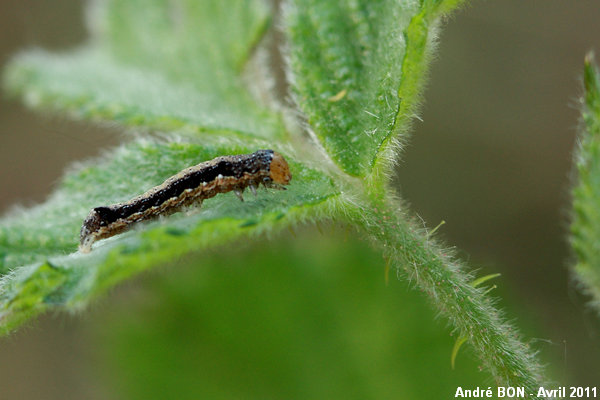
| Twin-spotted Quaker (Anorthoa munda (Denis & Schiffermüller, 1775)) |

|
|
Scientific name: Anorthoa munda (Denis & Schiffermüller, 1775) Common name: Twin-spotted Quaker Other names: Other scientific names: Orthosia munda, Perigrapha munda . French name: Orthosie picotée, Proprette Order: Lepidoptera Suborder: Heterocera Family: Noctuidae Subfamily: Hadeninae Wingspan: 38-44 mm. Biotope: Woodlands, deciduous and mixed coniferous-deciduous forests. Geographic area: Europe. Flight time: Late February to May. Number of generations : 1 Caterpillar: The head is reddish brown with dark dots. The dark blackish sides of the body contrast with a paler brown dorsal band showing a thin whitish median line. The underside is pale grey. There is a black cross stripe on the upper side of the eighth segment. Host plant: Various deciduous trees including Oaks (Quercus), Common Aspen (Populus tremula), Willows (Salix), Common Ash (Fraxinus excelsior), Field Maple (Acer campestre), Common Hop (Humulus lupulus) and Common Honeysuckle (Lonicera periclymenum). |
The Twin-spotted Quaker is a species which is variable in colour, from pale buff to reddish brown. You can easily tell it apart with the twin black spots on the fore wing. They may be missing on some specimens where they only appear as rufous marks. The Twin-spotted Quaker is attracted to light and sugar. It over winters as a pupa, inside a cocoon, in the soil. |
| [To know more about the Twin-spotted Quaker] [Top] |

|
It is rather easy to identify the species of this caterpillar, observed in the forest, though the picture is not very good. |